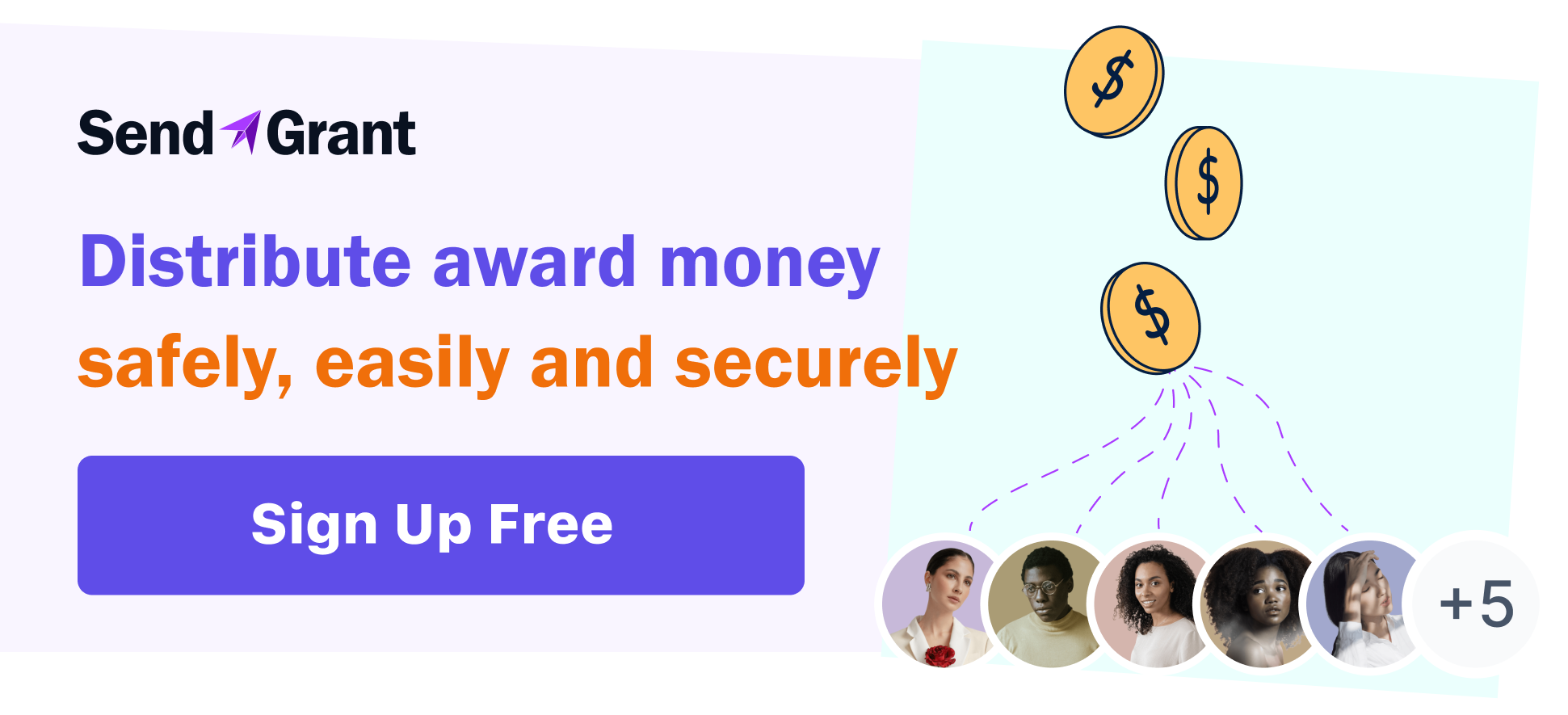4 Grant Budget Examples to Convince Funders
Lots of money is on the line in grantmaking. That’s why a killer grant budget is so important. The simple fact is, if someone is giving you a lot of money, well - they want to see budgets that showcase thoughtful planning. It’s what promises effective use of their money. But what's the secret sauce to a budget that wows?
If you’re interested in finding out, keep reading. Below, we're diving into four grant budget examples that'll turn heads and open wallets. Sounds good? Let's jump in!
Research Project Budget: Mapping the Financial Path to Discovery

What’s the connection between your budget and your research goals? Funders want to know, and it’s got to be clear to them. Let's look at an example of a research project budget for an environmental study on urban air quality.
A sample grant budget for something like this project would break down costs into categories like:
- Salaries: i.e. the lead researcher and research assistants
- Specialized equipment: i.e. air quality monitoring equipment
- Lab supplies for sample analysis
- Travel costs for field work
- Data analysis software licenses
Here’s an example of what a Research Project Budget might look like:
|
Category |
Item |
Amount |
|
Personnel |
Lead Researcher Salary (50% FTE) |
$40,000.00 |
|
Research Assistant Salaries (2 x 100% FTE) |
$70,000.00 |
|
|
Equipment |
Air Quality Monitoring Devices (5) |
$25,000.00 |
|
Data Loggers (5) |
$5,000.00 |
|
|
Supplies |
Lab Supplies |
$10,000.00 |
|
Field Work Supplies |
$5,000.00 |
|
|
Travel |
Field Work Travel (20 trips) |
$10,000.00 |
|
Conference Attendance (2 researchers) |
$4,000.00 |
|
|
Software |
Data Analysis Software Licenses |
$3,000.00 |
|
Other |
Publication Fees |
$2,000.00 |
|
Indirect Costs |
University Overhead (15%) |
$26,100.00 |
|
Total |
$200,100.00 |
What makes this grant budget example so convincing is its specificity. Each cost is directly tied to a component of the research plan.
The budget also includes a brief narrative for each major expense. Little touches like this help funders understand the value of their investment.
Community Outreach Program Budget: Funding Connection and Impact
Community outreach programs often require a diverse range of expenses to reach and engage their target audience. Let’s consider a budget for a youth mentorship program:
This budget might include categories like:
- Staff salaries
- Program supplies
- Venue rentals
- Transportation costs for field trips
- Marketing and outreach expenses
- Evaluation and reporting costs
Here’s an example of what a Community Outreach Program Budget might look like:
|
Category |
Item |
Amount |
|
Personnel |
Program Coordinator (100% FTE) |
$50,000.00 |
|
Mentors (5 part-time) |
$75,000.00 |
|
|
Program Supplies |
Educational Materials |
$5,000.00 |
|
Activity Supplies |
$7,500.00 |
|
|
Venue |
Rental for Group Sessions (52 weeks) |
$15,600.00 |
|
Transportation |
Field Trip Bus Rentals (12 trips) |
$6,000.00 |
|
Marketing |
Brochures and Flyers |
$2,000.00 |
|
Social Media Advertising |
$1,500.00 |
|
|
Evaluation |
External Evaluator |
$10,000.00 |
|
Training |
Mentor Training Workshop |
$3,000.00 |
|
Other |
Liability Insurance |
$2,000.00 |
|
Indirect Costs |
Administrative Overhead (10%) |
$17,760.00 |
|
Total |
$195,360.00 |
This grant budget example reflects the program's holistic approach. It goes beyond covering direct service costs. It also includes expenses for outreach, evaluation, and sustainability. If you want your funders to know you've thought through all aspects of program implementation and long-term success, these are awesome elements to consider adding to your budget.
Technology Implementation Budget: Investing in Digital Transformation
More organizations are embracing digital solutions. This means technology implementation budgets are becoming a lot more common. A sample grant budget for technology implementation might include:
- Software licensing fees
- Hardware upgrades
- IT consultant fees for implementation and training
- Data migration costs
- Staff time for system setup and learning
- Ongoing maintenance and support costs
Let’s take a closer look at what a grant budget example for Technology Implementation Budget might look like:
|
Category |
Item |
Amount |
|
Software |
CRM Software License (3-year) |
$30,000.00 |
|
Data Migration Tool |
$5,000.00 |
|
|
Hardware |
Server Upgrade |
$10,000.00 |
|
New Workstations (5) |
$7,500.00 |
|
|
Professional Services |
IT Consultant (200 hours) |
$20,000.00 |
|
Staff Training (40 hours) |
$4,000.00 |
|
|
Personnel |
IT Staff Overtime |
$5,000.00 |
|
Project Manager (25% FTE for 6 months) |
$15,000.00 |
|
|
Data |
Data Cleaning and Preparation |
$3,000.00 |
|
Contingency |
Unexpected Issues (10%) |
$9,950.00 |
|
Maintenance |
Annual Support Contract (Year 1) |
$5,000.00 |
|
Total |
$114,450.00 |
The strength of this budget lies in its forward-thinking approach. It goes above and beyond the initial implementation costs by also factoring in ongoing expenses and staff time needed for successful transition.
Your funders want to see that you've considered the full scope of the project beyond just the initial purchase.
Capacity Building Grant Budget: Strengthening Your Organization's Core
Capacity building grants are all about investing in your organization's infrastructure and capabilities. A budget like this might include:
- Fees for a fundraising consultant
- Staff training costs
- New donor management software
- Marketing materials development
- Costs for hosting a donor cultivation event
- Staff time dedicated to implementing new strategies
Here’s a closer look at what a Capacity Building Grant Budget might look like:
|
Category |
Item |
Amount |
|
Consulting |
Fundraising Strategy Consultant |
$20,000.00 |
|
Software |
Donor Management Software (2-year license) |
$10,000.00 |
|
Training |
Staff Fundraising Training (10 staff) |
$5,000.00 |
|
Grant Writing Workshop (2 staff) |
$2,000.00 |
|
|
Marketing |
New Brochure Design and Printing |
$3,500.00 |
|
Website Redesign |
$7,500.00 |
|
|
Events |
Donor Cultivation Event |
$5,000.00 |
|
Personnel |
Development Director (50% FTE for 1 year) |
$40,000.00 |
|
Grant Writer (25% FTE for 1 year) |
$15,000.00 |
|
|
Travel |
Fundraising Conference Attendance (2 staff) |
$3,000.00 |
|
Equipment |
New Computers for Development Team (2) |
$3,000.00 |
|
Other |
Prospect Research Tool Subscription |
$1,500.00 |
|
Total |
$115,500.00 |
This grant budget example is compelling because it ties each expense back to the goal of improved fundraising capacity. It also shows strategic investment in both tools and skills. Funders can clearly see how their support will lead to greater sustainability.
Key Elements That Make These Budgets Convincing
While each of these sample grant budgets were tailored to a specific type of project, they share some common elements that make them convincing to funders:
- Clarity and Detail: Each budget provides a clear breakdown of costs, helping funders understand exactly where money will go.
- Alignment with Project Goals: Every expense is tied back to the project's objectives, showing how it will directly contribute to success.
- Realistic Estimates: The budgets use accurate, well-researched cost estimates, demonstrating careful planning.
- Comprehensive Scope: They cover all aspects of the project, including often-overlooked costs like evaluation or ongoing maintenance.
- Narrative Support: Each budget is accompanied by brief explanations that justify major expenses.
Tailoring Your Budget to Different Funders
The reality is, different funders may have different priorities and requirements for budgets. So let’s look at some tips for tailoring your budget.
First, you want to research the funder's guidelines carefully. Some may have specific budget formats or allowable expenses.
It’s also a good idea to highlight expenses that align with the funder's priorities. If they're focused on innovation, for example, emphasize costs related to new approaches or technologies.
Don’t forget to be prepared to adjust as well. Some grant funders may not cover certain types of expenses, so have a plan for how you'll cover those costs if necessary.
Finally, consider the funder's typical grant size. If your project budget exceeds their usual range, be prepared to explain how you'll secure additional funding. For example, if you need more than $100,000, but the max budget is $50,000 for a grant, you might explain that the other half will come from donors, additional grants, angel investors, etc…
Avoiding Common Budget Mistakes

Even experienced grant writers can fall into budget pitfalls. Let’s take a look at some of the most common mistakes you’ll want to avoid.
- Underestimating Costs: It's tempting to lowball your budget to seem more attractive to funders, but this can lead to project shortfalls.
- Neglecting Indirect Costs: Don't forget to include a reasonable amount for overhead/administrative costs.
- Lack of Explanation: Don't assume funders will understand why each cost is necessary. Provide brief explanations for major line items.
- Inconsistency with Narrative: Ensure your budget aligns perfectly with the project description in your proposal narrative.
- Mathematical Errors: Double-check all your calculations so you don’t undermine credibility.
Enhancing Your Budget Presentation with Visuals
A well-designed visual presentation can make your budget more understandable and compelling. We recommend the following:
- Use charts or graphs to show the breakdown of expenses by category.
- Create a timeline linking major expenses to project milestones.
- If applying for partial funding, use pie charts to show how the requested grant fits into your overall project budget.
- For multi-year projects, consider a bar graph showing expenses over time.
Remember, the goal is to make your budget easy to understand at a glance, while still providing the necessary detail.
Streamlining Fund Distribution with SendGrant
Crafting an effective grant budget is both art and science, requiring careful planning, attention to detail, and a deep understanding of your project's needs and funder's priorities. A well-crafted budget does more than secure funding—it creates a financial roadmap, anticipates challenges, and showcases your organization's capability. Follow these strategies, and you'll create budgets that impress funders and drive real impact. And once you've acquired the funds, distribute them effortlessly using SendGrant, streamlining your workflow and maintaining the financial transparency funders appreciate. Click here to get your first five transactions free!



